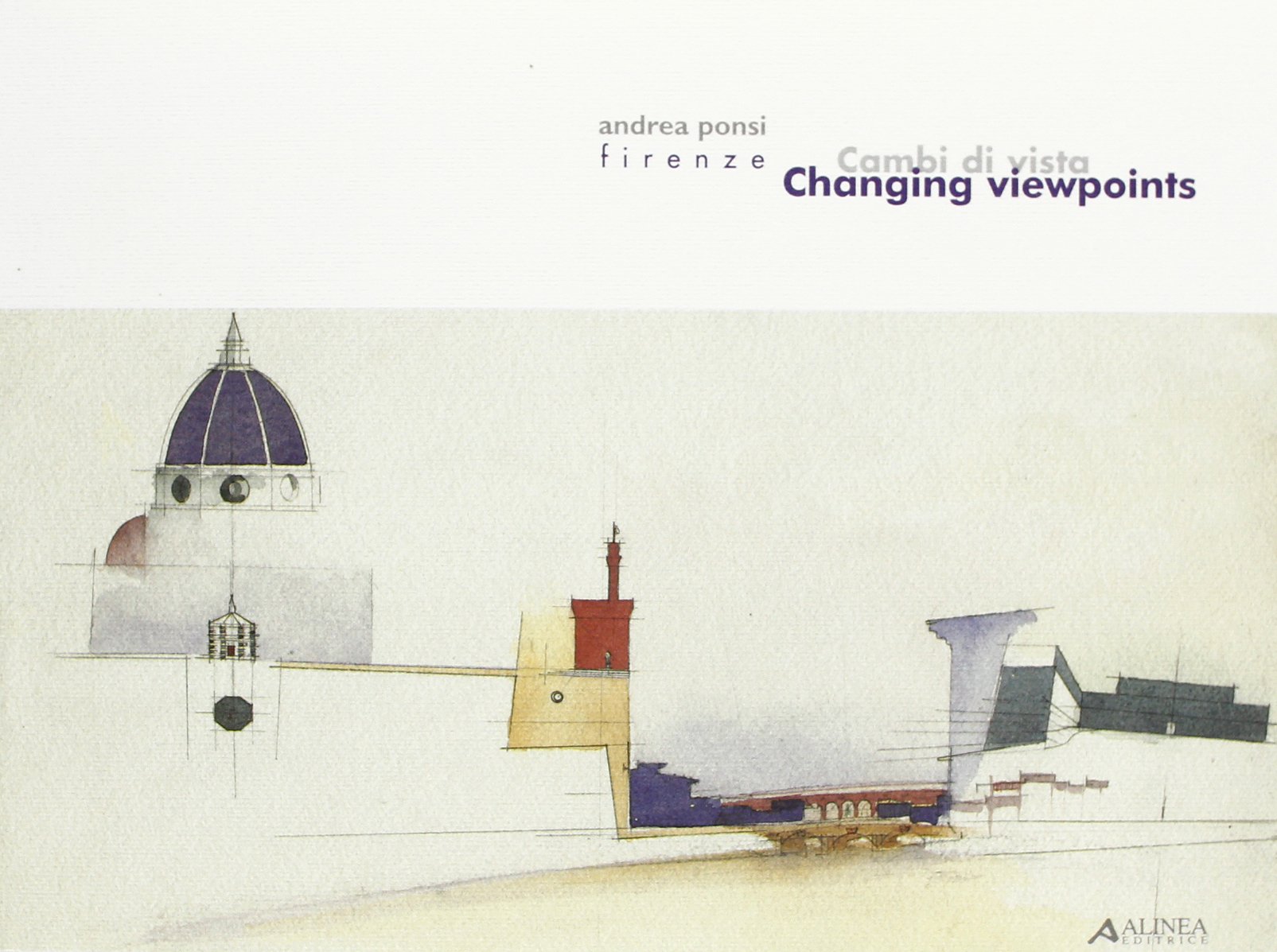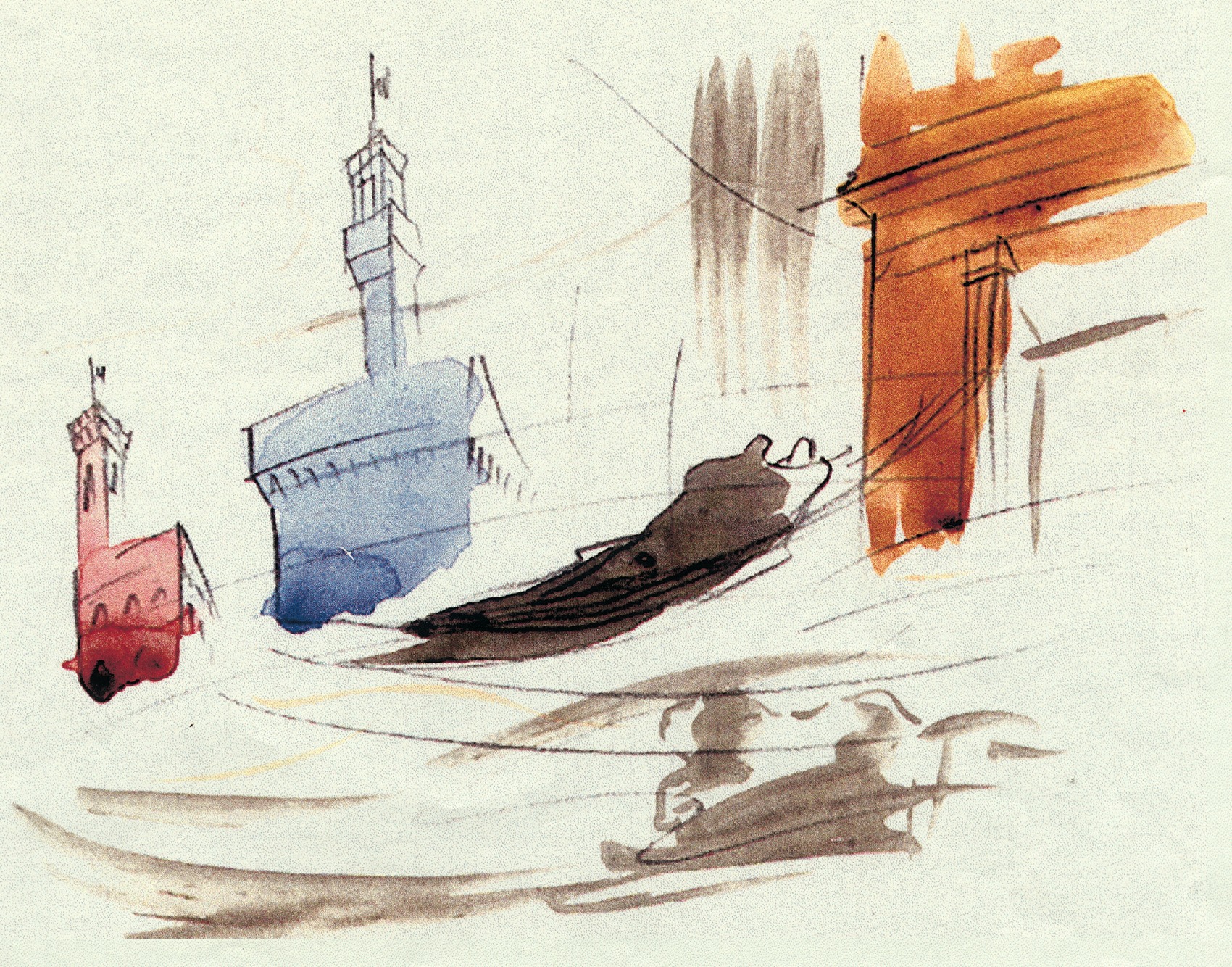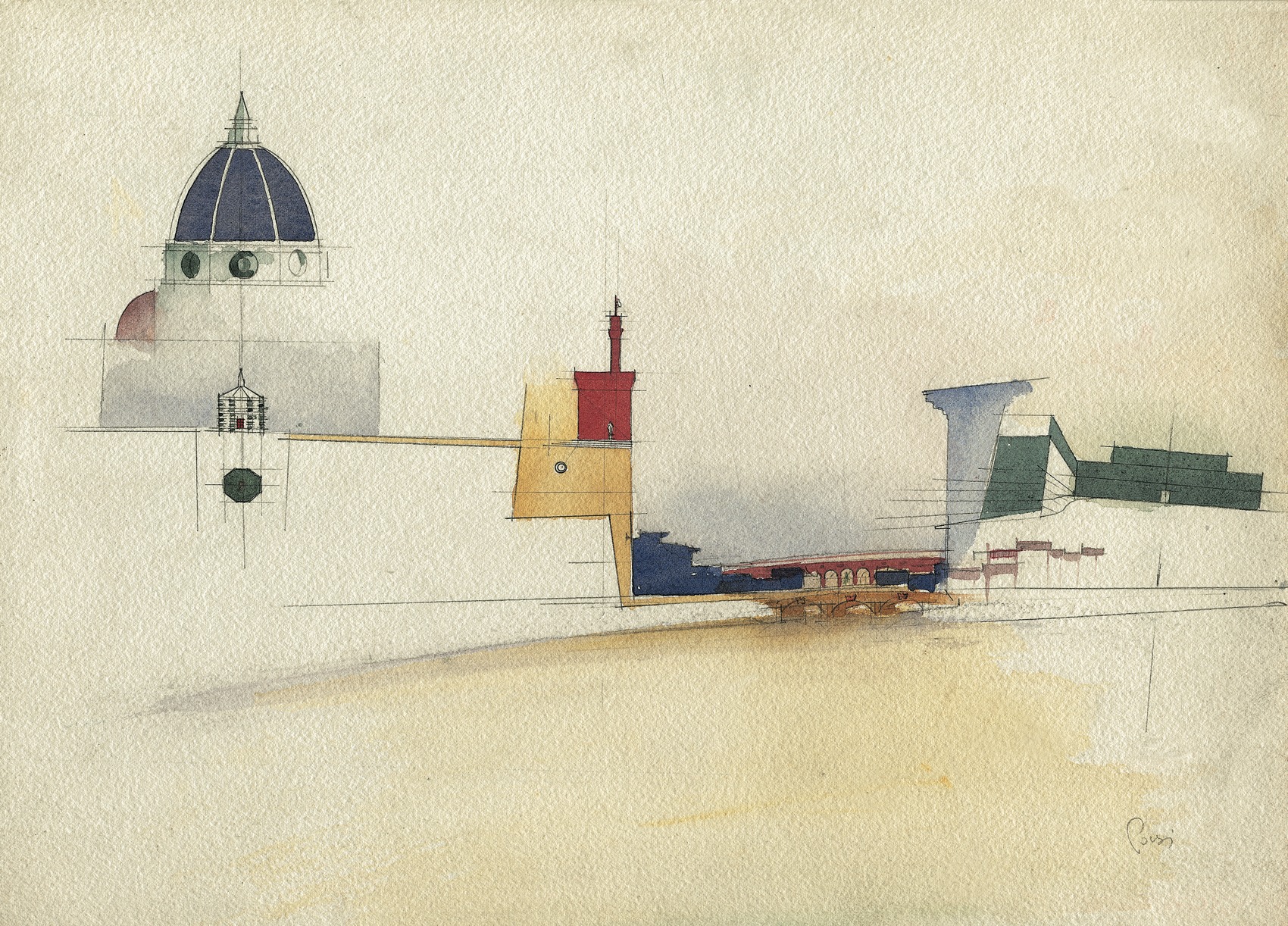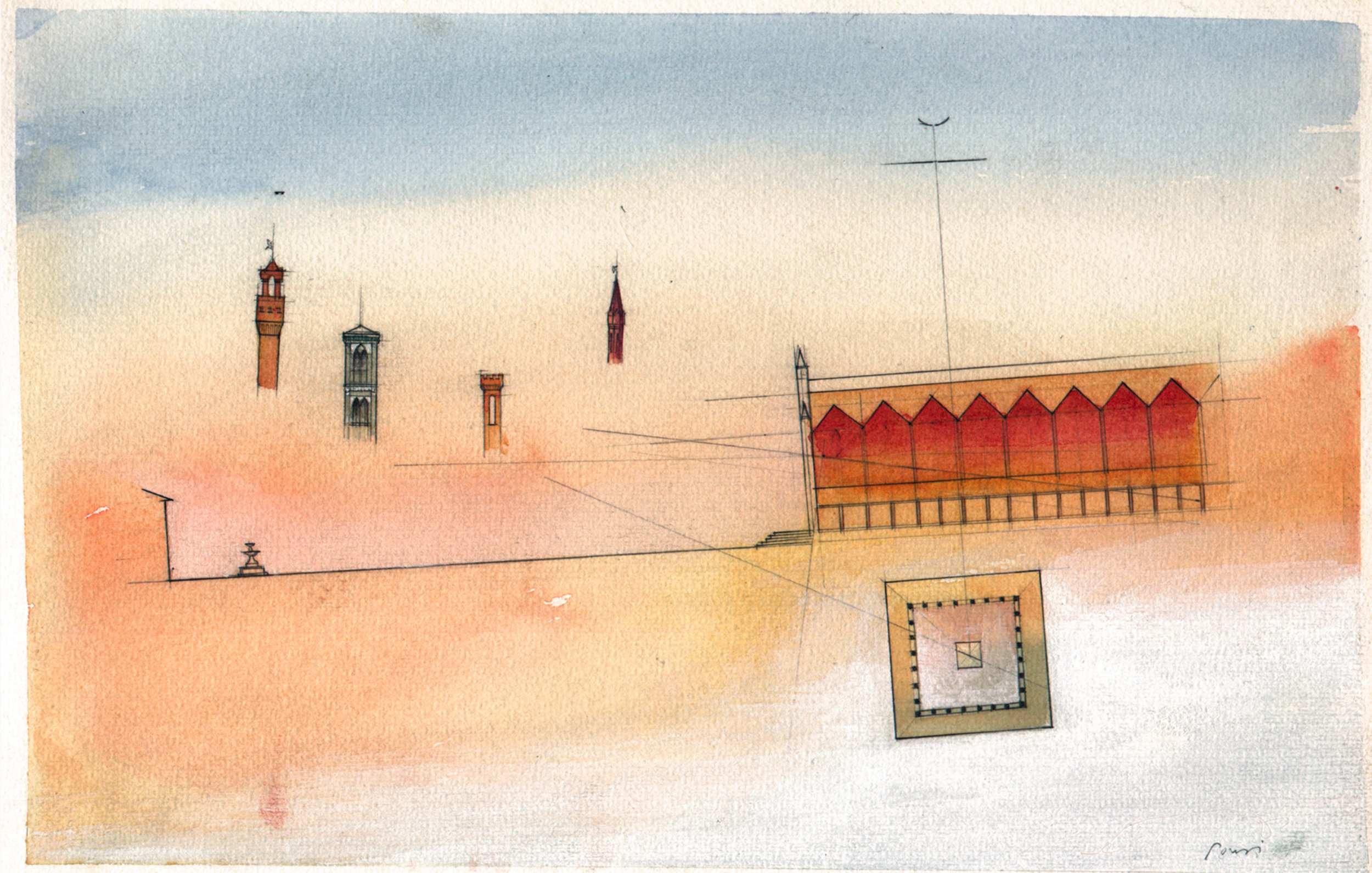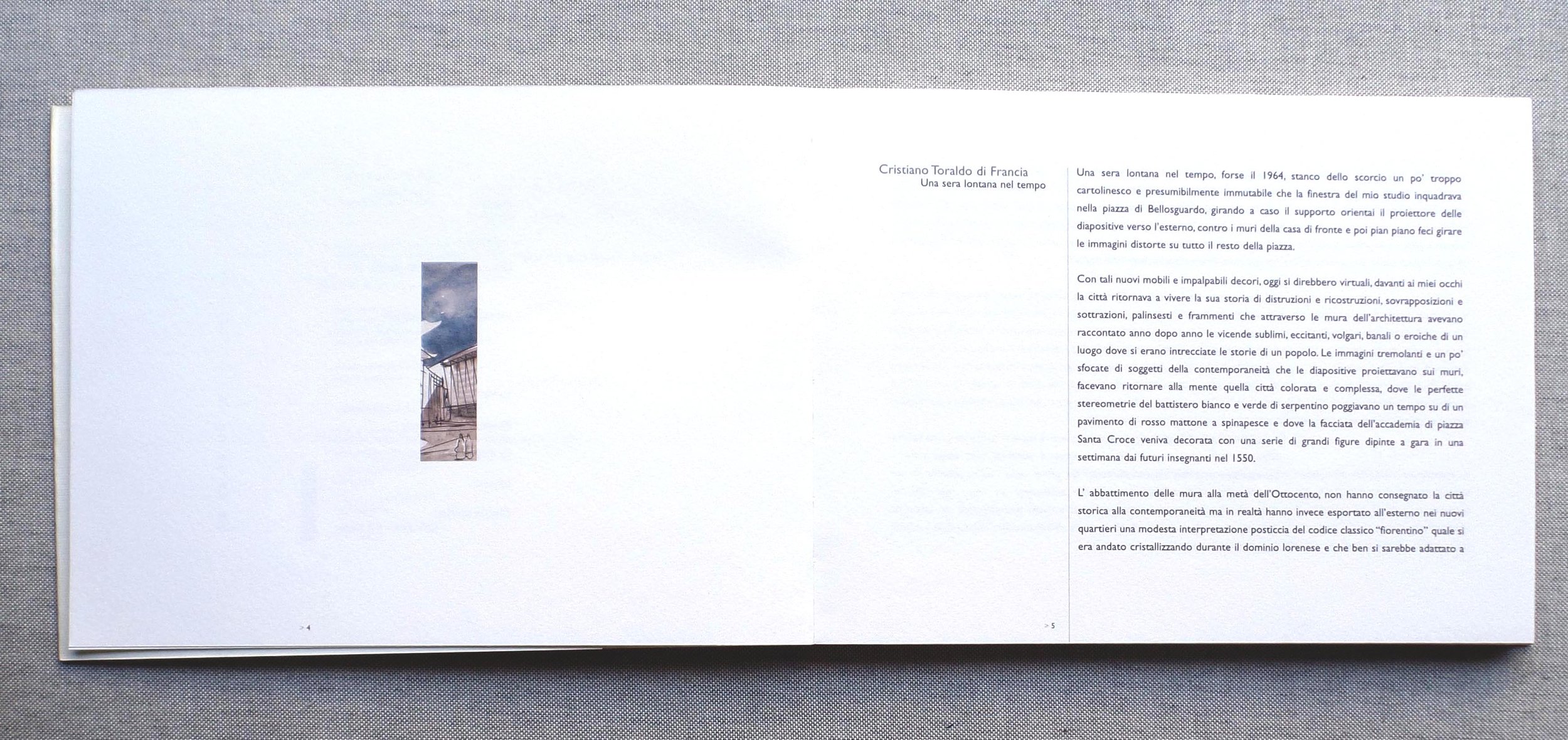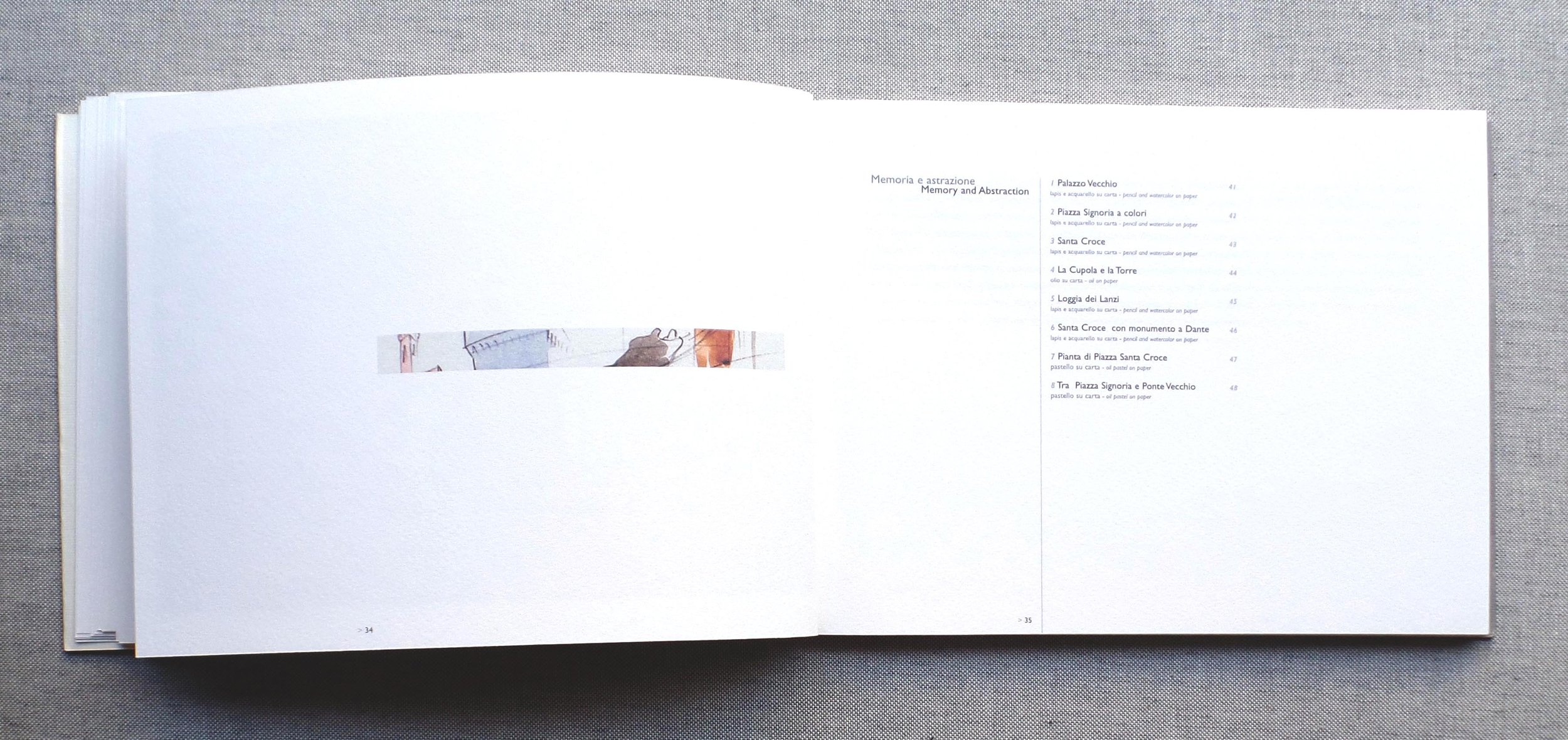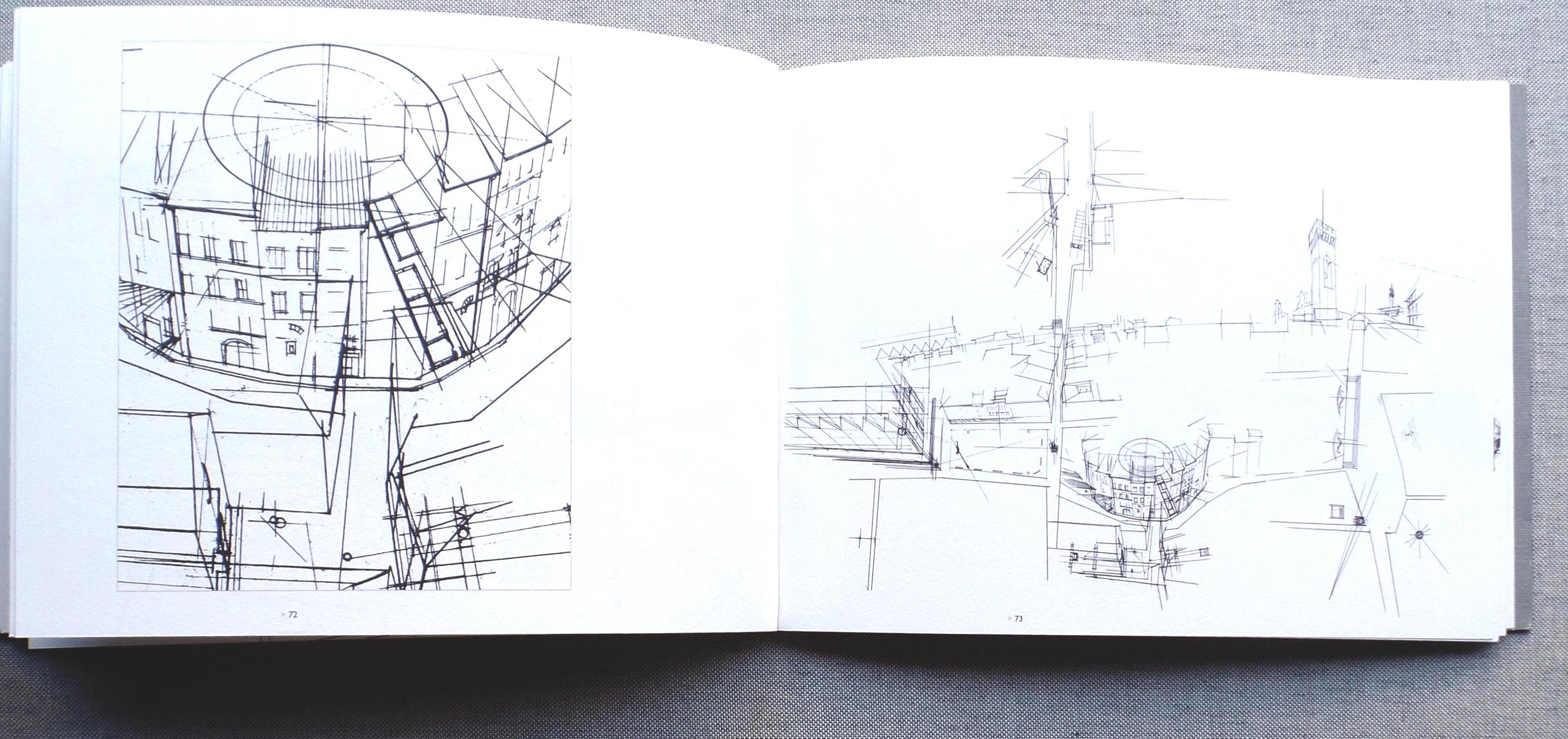FLORENCE - CHANGING VIEWPOINTS
Andrea Ponsi, Alinea, Florence, 2001
ISBN 978-8881255054
Introductions by Pippo Ciorra and Cristiano Toraldo di Francia
From the introduction by Pippo Ciorra
A Contemporary City
The relationship between Florence and contemporary architecture is a difficult one, full of ups and downs, made of burning illuminations and unavoidable figures, collective exaltation and long and correspondingly generalised depressions. For decades Michelucci, Savioli and Ricci solved the contradictions between the traditionalist city and the modern idea of architecture with their individual flair, hiding the fact that it is difficult to assert a widespread culture behind the seductive and unique forms of their projects, using individual charisma as a passepartout to overcome the resistance o fa city which does not readily accept innovations.
For another decade, between the 60s and the 70s, the “radical” architects, moving with skill and open-mindedness between architecture, art and design, really have succeeded in making Florence an engine of avant-garde international architecture, bringing it to the centre of the flow of ideas and experimentation which still today affect the understanding of physical and conceptual space. In recent years this wealth of experimental ideas has been somewhat diluted and undermined by the ephemeral fortune of Memphis design and the still more fragile return of architectural historicism, weakened by a university that continues to reflect and exalt the ills of the national university system: isolation, lack of interest in what is happening elsewhere and a tendency towards implosion.
The fruit of the great dissemination of architecture worked by the masters, by Superstudio, Archizoom, the critical acumen of Koenig, are to be found nowadays in the work of less known and more detached architects, inquisitive and careful designers who over these years have induced the Florentine heritage to react positively to innumerable other stimuli gathered from all over the world. One of the most prominent names in this vaguely eclectic panorama is certainly that of Andrea Ponsi, a Florentine and Californian architect and designer who teaches in schools of architecture internationally, and travels widely while at the same time retaining that specific sense of the urban space that only Florence can somehow pass on.
In his series on Florentine Changing Viewpoints, Ponsi’s research is based on two main focuses: on the one hand there is Guelph and at the same time Parisian Florence, of which we have spoken, and its “complex and contradictory” relations with modernity. On the other hand there is the role that design must play in comprehending urban events and in forming an architectural awareness. Ponsi investigates both ancient and ultra-modern Florence, and also examines the use of graphics and applies it in its widest and most descriptive forms and stresses its most subjective and succinct techniques, implicitly comparing it with a multitude of forms of presentation - video, computer, photography, collage - increasingly adopted by everyone who has anything to do with matters involving planning or the city.
Certainly the “sketches” in Changing Viewpoints achieve the result of reminding us of the infinite possibilities of design and figurative drawing in architecture. His The Objective View reminds us of Florence’s colours and spaces, its wealth of shapes and decorations, and the strength of its architectural styles. The series of drawings calledMemory and Abstraction bring us back to the “impressionist” quality of the architectural gaze, revealing its essence as in some way already planned by space. The third section of the book creates a Subjective map of the city, using analytical design to dismantle, select and realign the city’s images and itineraries, using techniques of overlapping and stratification that we tend to see in computer programmes on the displays showing successive layers. The fourth section of the book, Analogous Florence, appears to present its visionary and conceptual centre, the implicit reason for Ponsi to have chosen this complex parallel interpretation of Florentine urban space and of the techniques necessary to understand and depict it.
Ponsi’s analogous designs consist of a series of typical views ofFlorence where historical buildings are replaced by contemporary buildings, created in his imagination, modern and ultra-modern constructions which superimpose a modern and up-to-date language over the plans and volumes of the past. There is clearly a twofold aim: on the one hand the need, which may be obvious but which cannot be taken for granted, to understand that contemporary architecture has the necessary dignity and means to be part of the historical and monumental space without detracting from their meaning.
On the other hand, and I think this is the most interesting theme, there is the proposal to retrieve in the contemporary city some of the principal values of the historical and above all medieval city: its density, the variety of colours, the element of surprise, the monuments. Faithful to Piranesi and rational at the same time, the views of Piazza Signoria and the Ponte Vecchio, Piazza Pitti , Piazza Santa Croce and Santissima Annunziata, show the original capacity to grasp the medieval sense in ultra modernity, understanding the presence of a dialectic relationship between architectural order and urban chaos, the desire to experiment with new forms of language without prejudice to the strong sense of public spirit or exchange that only the historical city has so far succeeded in communicating to us. Thus Ponsi compiles what he himself calls an imaginary Baedecker, in which urban spaces have the strength and the identity of the historical Florentine layouts and the architectural forms have the aggressiveness and the communicative capacity of the most recent buildings. There is an almost overpowering sense of wealth and elegance, causing both suffering and delight to Florentine architecture, but above all there is an awareness of contemporary urban space, so little investigated in Florentine architectural research in recent years.
In the same period in which he was busy putting together these designs, Ponsi won an important international competition for the Palos Verdes Art Center in California, with a project full of ideas which concentrated on another series of themes: relations with objects, with art and nature, a tendency to create a museum dimension in a context which was not in the least urban, the desire to use light materials which were foreign to the Florentine tradition. Put together, the series of designs and this project define a creative personality which is at the same time complete and interesting, and certainly able to make a positive contribution towards the recovery of the Florentine and Italian scenario, both of which are still rather static, but anxious to start working towards the construction of the contemporary landscape.
The Objective Map
Memory and Abstraction
The Subjective Map
Itineraries
Analogous Florence
RELATED NEWS:

